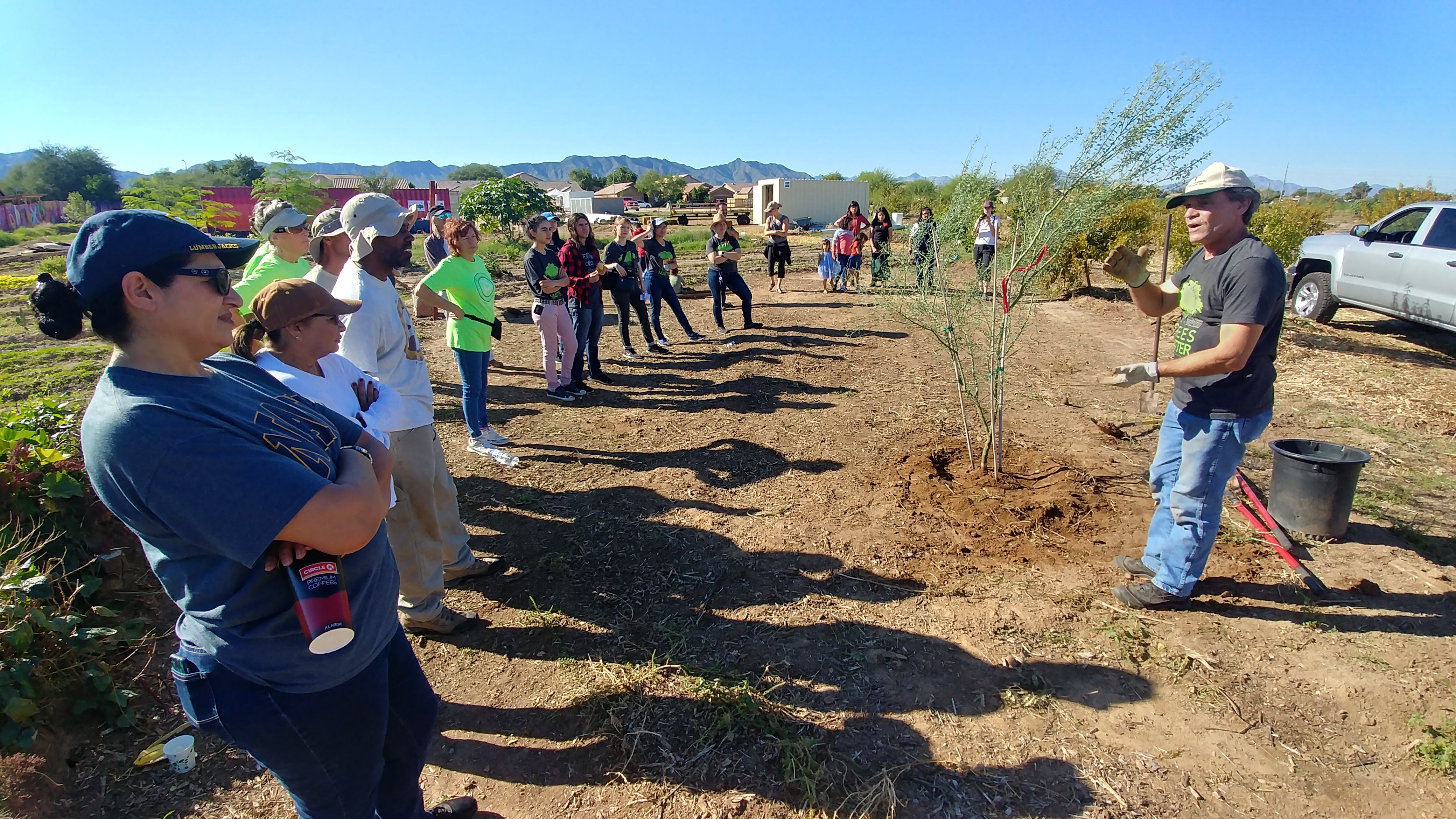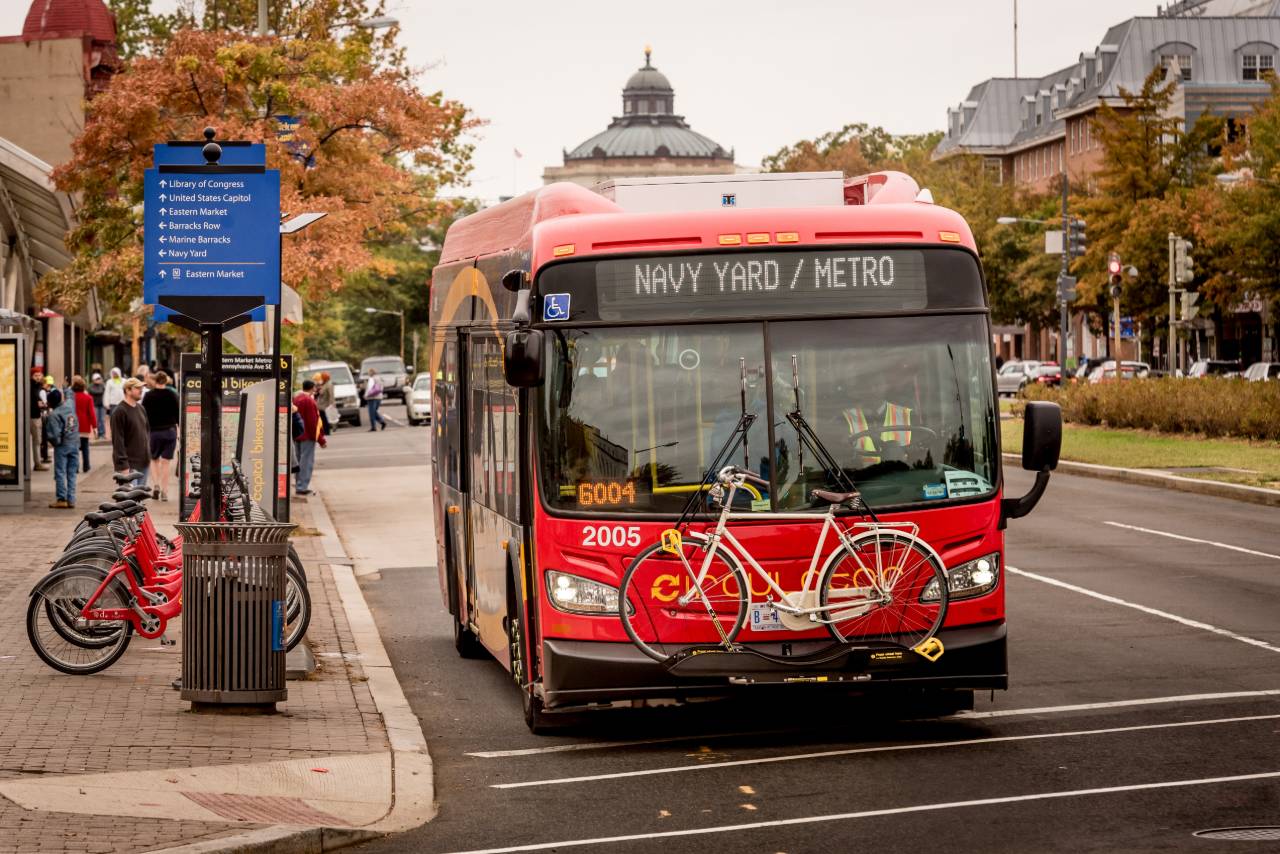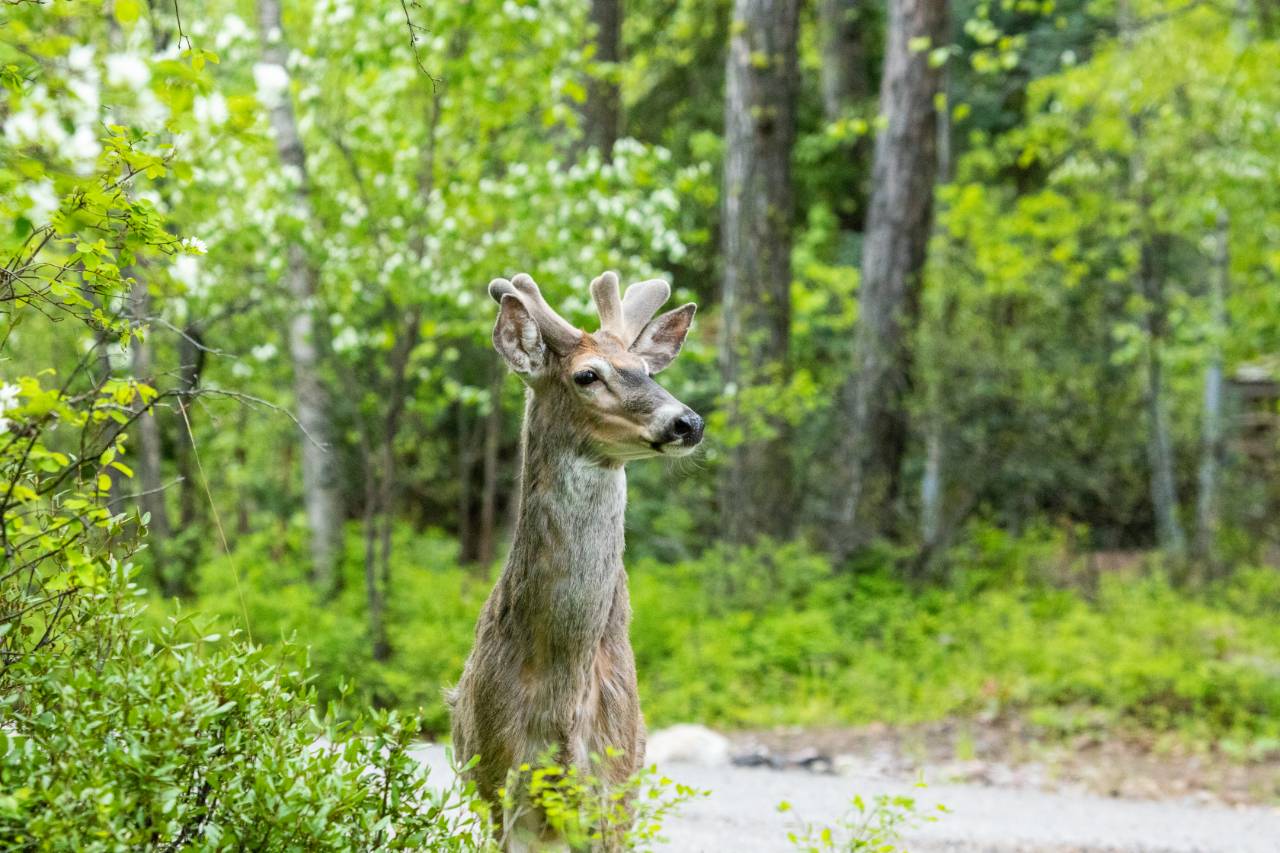*En Español*
With their homes positioned in the heart of America’s desert, the residents of Phoenix are accustomed to sweltering heat.
In summer, the metropolitan area’s 4.7 million people must often go about their daily lives with temperatures exceeding 100° Fahrenheit. Only 12% of the city is covered in trees, leaving much of it exposed to the hot desert sun. Where trees are lacking, loose dust can become airborne, creating air quality issues.
These problems have been getting worse over recent decades. Long-term records show that nighttime temperatures in the city are about 10°F higher than they were 50 years ago. This is mostly due to urban development, as materials like concrete increase the amount of heat retained in the city after the sun sets. Daytime temperatures have also increased by a couple of degrees over the same period, mostly as a result of the global-scale warming that is occurring. This trend will continue – and the projections are alarming. Between 1951 and 2000, Phoenix experienced about 44 days over 105°F on average each year; the city may experience more than 100 such days each year by 2040.
As Maggie Messerschmidt began considering environmental projects that could help the city, concerns related to heat were a consistent theme brought forth by residents. Messerschmidt works for the Nature Conservancy in Arizona, which addresses a range of environmental issues including those faced by people in large cities.
The Phoenix neighborhood of Edison-Eastlake has a rate of heat-related death and illness that is 20 times higher than the county average.
To start a project in Phoenix and the surrounding area that would address heat, Messerschmidt and her colleagues at Nature Conservancy first established a core team of people from different organizations, including officials from the Maricopa County Department of Public Health, Arizona State University (ASU), and the Central Arizona Conservation Alliance. With the team in place, they began identifying neighborhoods that exhibit relatively higher temperatures, and some with significantly higher rates of heat-related illnesses and deaths. From eight neighborhoods, they selected three to focus on: Mesa “Care” neighborhood, Lindo/Roesley Park in South Phoenix, and Edison-Eastlake.
As part of the Nature’s Cooling Systems project, the team hosted workshops in each of the three neighborhoods, where residents could voice their heat-related concerns and outline possible solutions. While some suggestions, such as more shade at bus stops, were fairly straightforward, these discussions also uncovered a deeper desire in residents for more knowledge about the effects of heat.
As residents began to learn more about the effects of heat through these discussions, they realized the importance of this knowledge and proposed implementing a first aid certification program that residents could take to become a “certified heat responder.” Edison-Eastlake has a rate of heat-related death and illness that is 20 times higher than the county average; therefore, educational programs and first aid training could play an important role in helping residents better cope with the dangers and costs of heat.
Some other solutions that were proposed include:
- Drinking stations at one-mile intervals;
- Shade structures that can be moved around to shelter commuters from the sun at different times of the day and year;
- Trees or other vegetation that could be incorporated at bus stops and parks to provide a cooling effect;
- More vegetation within empty lots, to reduce loose dust that creates air quality issues; and
- An expanded heat warning system that alerts people when it is unsafe to be outdoors.
Importantly, Messerschmidt notes that conversations with experts from The Nature Conservancy, ASU and other organizations helped residents better understand their heat-related risks and how those risks may be increased in the future.
The Nature’s Cooling Systems project succeeded in engaging community members. By the end of the consulting phase, residents across all three neighborhoods expressed interest in receiving advocacy training, so that they could better communicate and work with city officials to achieve their heat-related goals. A full report of what each neighborhood highlighted was published in a Heat Action Planning Guide in the summer of 2019. Although funding for most of these recommendations still needs to be secured, initial funding for a program to support and mobilize neighborhood leaders to address heat-related issues is in place.
David Hondula, a researcher at ASU who contributed to the project, points out several other ways the project leaders are facilitating change. For instance, they reached out to the regional transportation planning association, which is developing a new active transportation plan for the region. They discussed ways in which specific measures to address heat could be incorporated into the new plan, including by updating the scoring criteria for new transportation project/infrastructure proposals. Through this approach, the city will give greater priority to the proposals that actively address heat-related issues affecting the transit system. “Although we are not talking about generating a new pot of money, having this criteria in the scoring guidelines is going to affect how investors are spending money,” explains Hondula. “It’s an important way to think about investment.”
Hondula has also been part of a larger, city-wide initiative to address Phoenix’s heat issues. The local government already has dozens of heat programs in place; however, these are somewhat disjointed, according to Hondula. As part of a recent effort to streamline these projects and better tackle heat issues, the city, in collaboration with Hondula and other stakeholders, recently launched a program called HeatReady. The program will foster better coordination across the city’s departments and will focus heat mitigation efforts where they are needed most.
One effective way to lower temperature is by adding more tree canopy, which is why the city intends to increase its tree canopy from its current coverage of 12% to about 25%. However, multiple city departments are currently responsible for caring for trees. HeatReady will help the different participating departments coordinate planting, watering, and long-term maintenance.
“ASU research has shown that if the city does achieve that goal of 25%, or at least in the neighborhoods where that goal is achieved, there would be a measurable reduction in air temperatures and even more importantly in what we might call radiant temperatures, which is more like a ‘feels-like’ temperature,” says Hondula. “The city is also thinking more aggressively and practically about materials and the design of buildings, as well as what it’s using in parking lots and rooftops.”
Although these projects are in the early stages, there is now a greater understanding of the impacts of heat and the need for action at both a community and governmental level. It is one step toward building resilience to a changing climate.
Even the project leaders now feel like they have a better grasp of the situation moving forward. Messerschmidt says that comparing the heat in the Phoenix from the last 50 years to the next 50 years was a huge learning experience for her; what’s more, although heat increase is incremental, there is a threshold point around 104 °F where people can start getting really sick, underscoring the importance of taking aggressive action as soon as possible.
Story by: Michelle Hampson (Sept. 2019).
Image: Volunteers are briefed on best practices for tree planting from a professional arborist, ahead of a community greening event along the Salt River in Phoenix, AZ. | Credit: David Hondula.



